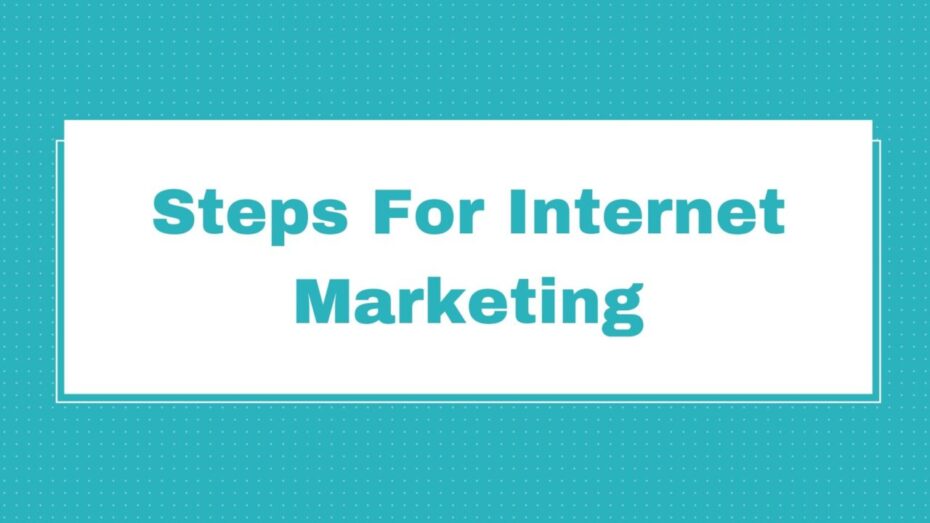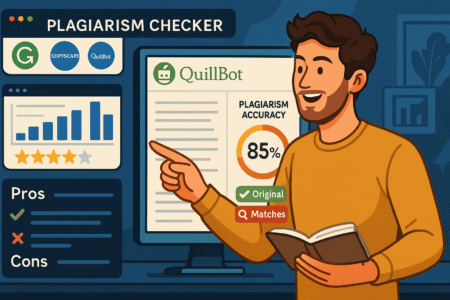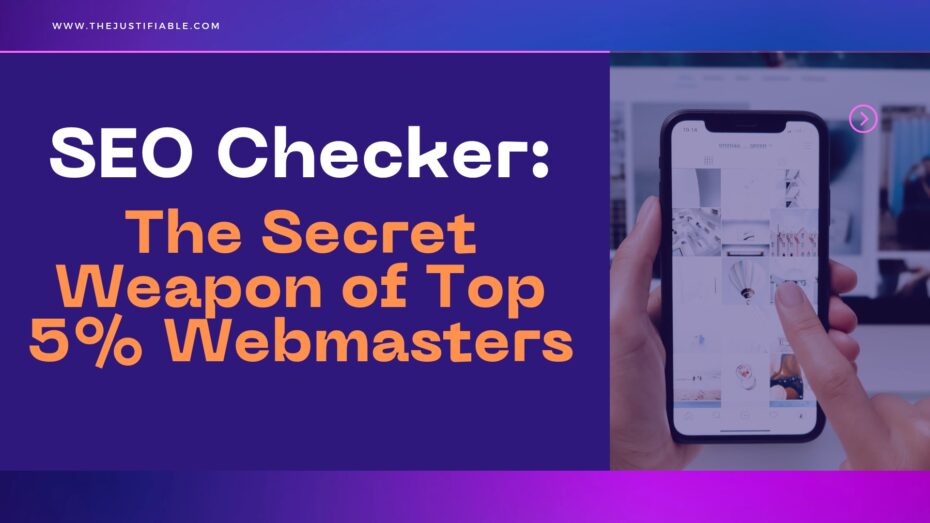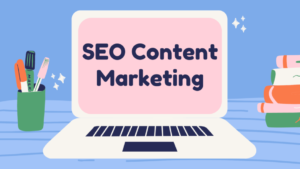Table of Contents
Internet marketing is the cornerstone of modern business strategies. By mastering these techniques, you’ll unlock the potential to reach a global audience and drive significant growth. Let’s delve into the five best steps to get you started on your internet marketing journey.
1. Understanding the Basics of Internet Marketing
Understanding the basics of internet marketing is essential for anyone looking to grow their business online. Internet marketing encompasses a wide range of strategies and techniques aimed at promoting products and services over the internet. By mastering these basics, you’ll be well-equipped to create effective marketing campaigns that drive traffic, generate leads, and boost sales.
Most importantly, I recommend you to start by familiarizing yourself with the fundamental concepts of internet marketing. This will help you grasp the bigger picture and understand how different strategies work together to achieve your marketing goals.
My suggestion is to focus on learning about SEO, content marketing, social media marketing, and email marketing as these are the core components of a successful internet marketing plan.
Defining Internet Marketing and Its Importance
Internet marketing, often referred to as online marketing or digital marketing, involves using the internet to promote and sell products or services. This can include a variety of tactics such as search engine optimization (SEO), social media marketing, email marketing, and content marketing. I believe understanding the definition of internet marketing is the first step toward mastering it.
I strongly believe that the importance of internet marketing cannot be overstated. In today’s digital age, having a robust online presence is crucial for businesses of all sizes. My advice is to leverage internet marketing to reach a broader audience, engage with customers, and ultimately drive sales.
The ability to measure and analyze the effectiveness of your marketing efforts in real-time is one of the biggest advantages of internet marketing. This data-driven approach allows you to make informed decisions and optimize your strategies for better results.
I advise you to start implementing internet marketing strategies as early as possible. By doing so, you’ll be able to build brand awareness, attract potential customers, and stay ahead of your competitors. My recommendation is to continually educate yourself on the latest trends and best practices in internet marketing to ensure your efforts remain effective and relevant.
Key Components of a Successful Internet Marketing Strategy
A successful internet marketing strategy comprises several key components that work together to achieve your marketing objectives. First and foremost, I suggest focusing on search engine optimization (SEO). SEO is the practice of optimizing your website to rank higher in search engine results pages (SERPs), making it easier for potential customers to find you online.
Content marketing is another vital component. Creating and distributing valuable, relevant, and consistent content helps attract and retain a clearly defined audience. I recommend you to develop a content marketing plan that includes blog posts, articles, videos, and infographics that provide genuine value to your audience.
Social media marketing is equally important. Utilizing platforms like Facebook, Twitter, and Instagram allows you to connect with your audience on a more personal level, build brand loyalty, and drive traffic to your website. I believe engaging with your followers regularly and sharing valuable content can significantly enhance your online presence.
Email marketing remains a powerful tool for nurturing leads and driving conversions. I advise you to build an email list and craft compelling email campaigns that provide value to your subscribers. Personalizing your emails and segmenting your audience can lead to higher open and click-through rates, ultimately boosting your sales.
Common Misconceptions About Internet Marketing
There are several common misconceptions about internet marketing that can hinder your success if left unaddressed. One such misconception is that internet marketing is only for large businesses with substantial budgets. I would say this is far from the truth. Small businesses can also benefit significantly from internet marketing by leveraging cost-effective strategies like SEO and social media marketing.
Another misconception is that internet marketing delivers instant results. I point out that successful internet marketing requires time, effort, and patience. It involves consistent efforts in creating high-quality content, optimizing your website, and engaging with your audience. Over time, these efforts will pay off, leading to increased traffic and sales.
Some people believe that once a marketing campaign is set up, it doesn’t require further attention. I recommend you to continuously monitor and optimize your campaigns. Internet marketing is dynamic, and staying updated with the latest trends and adjusting your strategies accordingly is crucial for long-term success.
Lastly, there’s a misconception that internet marketing is too complicated for beginners. While there is a learning curve, I strongly believe that with the right resources and dedication, anyone can master internet marketing. My suggestion is to start with the basics, seek out reputable learning materials, and gradually build your knowledge and skills.
2. Building a Strong Online Presence
Building a strong online presence is essential for success in today’s digital marketplace. A well-established online presence allows businesses to connect with a wider audience, build brand authority, and drive traffic to their products and services. Most importantly, a strong online presence helps you stay competitive in your industry and reach your business goals.
I recommend starting by assessing your current online presence and identifying areas for improvement. This could include optimizing your website, enhancing your social media profiles, and creating high-quality content. I advise you to focus on creating a cohesive online identity that reflects your brand values and resonates with your target audience.
Crafting an Engaging Website
Crafting an engaging website is a fundamental step in building a strong online presence. Your website serves as the digital storefront for your business, and it is often the first point of contact for potential customers. I believe a well-designed website can significantly impact your credibility and user experience.
My suggestion is to start with a clean, intuitive design that is easy to navigate. Ensure that your website is mobile-friendly, as a significant portion of web traffic comes from mobile devices. I recommend you to include clear calls-to-action (CTAs) that guide visitors towards taking desired actions, such as signing up for a newsletter or making a purchase.
High-quality content is crucial for engaging visitors and keeping them on your site. I advise you to regularly update your website with informative blog posts, articles, and multimedia content that provides value to your audience. Additionally, integrating customer testimonials and case studies can help build trust and credibility.
Lastly, I suggest implementing an analytics tool to track user behavior on your website. This will allow you to understand how visitors interact with your site and identify areas for improvement. I strongly believe that continuous optimization based on data insights is key to maintaining an engaging website.
Optimizing for Search Engines (SEO)
Optimizing your website for search engines (SEO) is crucial for increasing your online visibility and attracting organic traffic. SEO involves various strategies and techniques to improve your website’s ranking on search engine results pages (SERPs). My advice is to focus on both on-page and off-page SEO to achieve the best results.
On-page SEO includes optimizing your website’s content and HTML source code. I suggest you to start with keyword research to identify relevant keywords that your target audience is searching for. Incorporate these keywords naturally into your content, headings, and meta descriptions. I advise against keyword stuffing, as it can harm your rankings.
Technical SEO is another important aspect. Ensure that your website loads quickly, has a secure HTTPS connection, and is mobile-friendly. I recommend using tools like Sitechecker to monitor your website’s performance and identify any technical issues that need to be addressed.
Off-page SEO involves building backlinks from reputable websites to improve your site’s authority. My recommendation is to create high-quality content that other websites will want to link to. Engaging in guest blogging and reaching out to industry influencers can also help you acquire valuable backlinks.
I point out that SEO is an ongoing process, and staying updated with the latest trends and algorithm changes is crucial. Regularly analyzing your SEO performance and adjusting your strategies accordingly will help you maintain and improve your search engine rankings over time.
Utilizing Social Media Platforms
Utilizing social media platforms effectively can greatly enhance your online presence and help you connect with your audience on a more personal level. Social media allows you to engage with your customers, share valuable content, and build brand loyalty. I believe that a strategic approach to social media marketing can yield significant benefits for your business.
First, I suggest identifying the social media platforms that are most popular with your target audience. Focus your efforts on these platforms to maximize your reach and engagement. My recommendation is to create a consistent posting schedule and share a mix of content, including promotional posts, informative articles, and engaging multimedia content.
Interacting with your followers is key to building a strong social media presence. I advise you to respond to comments, messages, and mentions promptly. Engaging with your audience shows that you value their input and are willing to build relationships. Additionally, running social media contests and polls can increase engagement and attract new followers.
I strongly believe that leveraging social media analytics tools is essential for tracking your performance and understanding what works best for your audience. Use these insights to refine your social media strategy and focus on the types of content that drive the most engagement.
Lastly, I recommend exploring paid social media advertising to reach a larger audience. Platforms like Facebook, Instagram, and LinkedIn offer targeted advertising options that allow you to reach specific demographics based on interests, behaviors, and location. This can be a highly effective way to boost your online visibility and drive traffic to your website.
3. Developing a Content Marketing Plan
Developing a content marketing plan is a critical step in establishing a successful internet marketing strategy. A well-thought-out plan ensures that your content aligns with your business goals, engages your target audience, and drives measurable results. Most importantly, a content marketing plan helps you stay organized and consistent in your efforts.
I recommend starting by defining your target audience and understanding their needs and preferences. This will guide your content creation and ensure that your efforts resonate with your intended audience. My advice is to set clear goals for your content marketing, such as increasing brand awareness, generating leads, or driving website traffic. With these goals in mind, you can create a strategic plan that includes a content calendar, topics, and formats that will help you achieve your objectives.
Importance of High-Quality Content
High-quality content is the foundation of any successful content marketing plan. It not only attracts and retains your audience but also establishes your authority and credibility in your industry. I believe that investing time and resources in creating valuable content will yield long-term benefits for your business.
My recommendation is to focus on providing genuine value to your audience through your content. This can include informative blog posts, in-depth articles, engaging videos, and eye-catching infographics. I suggest you to avoid overly promotional content and instead aim to educate, entertain, and inspire your readers. High-quality content is more likely to be shared and linked to, which can improve your search engine rankings and drive more traffic to your website.
I advise you to conduct thorough research on the topics you cover and ensure that your information is accurate and up-to-date. This will help you build trust with your audience and position your brand as a reliable source of information. Additionally, using clear and concise language, along with a friendly and conversational tone, will make your content more relatable and engaging.
I strongly believe that consistency is key when it comes to content marketing. Regularly publishing high-quality content will keep your audience engaged and coming back for more. I recommend you to create a content calendar to plan your topics and schedule your posts in advance. This will help you maintain a steady flow of content and stay on track with your marketing goals.
Types of Content to Consider
There are various types of content that you can incorporate into your content marketing plan to reach and engage your audience effectively. I would say that diversifying your content formats can help you appeal to different preferences and capture the attention of a broader audience.
Blog posts are a staple of content marketing and are excellent for providing in-depth information on a wide range of topics. I suggest writing informative and well-researched articles that address the pain points and interests of your audience. This can help you establish your expertise and drive organic traffic to your website.
Videos are highly engaging and can effectively convey complex information in an easily digestible format. I recommend creating instructional videos, product demonstrations, and behind-the-scenes content to connect with your audience on a more personal level. Videos can be shared on platforms like YouTube and social media to reach a wider audience.
Infographics are visually appealing and can simplify complex data or processes. My advice is to use infographics to present statistics, comparisons, and step-by-step guides in a visually engaging way. Infographics are highly shareable and can attract backlinks, which can boost your SEO efforts.
E-books and whitepapers are excellent for providing comprehensive information on specific topics. I recommend offering these as downloadable resources on your website in exchange for contact information. This can help you generate leads and build your email list while providing valuable content to your audience.
Content Distribution Channels
Choosing the right content distribution channels is crucial for ensuring that your content reaches your target audience effectively. I believe that leveraging multiple channels can help you maximize your content’s visibility and engagement.
Your website is the primary platform for hosting your content. My advice is to optimize your website for search engines (SEO) to increase your organic reach. Regularly updating your blog and creating dedicated landing pages for your content can improve your site’s performance and attract more visitors.
Social media platforms are powerful tools for distributing your content and engaging with your audience. I suggest sharing your content on platforms like Facebook, Twitter, LinkedIn, and Instagram to reach a broader audience. Each platform has its unique features and audience, so tailor your content accordingly to maximize its impact.
Email marketing is another effective distribution channel. I recommend you to send regular newsletters to your subscribers, highlighting your latest blog posts, videos, and other content. Personalizing your emails and segmenting your audience can lead to higher engagement and better results.
Guest blogging and partnerships with other websites in your industry can also help you reach a new audience. I advise you to collaborate with influencers and industry leaders to create and share content. This can increase your credibility and attract more traffic to your website.
4. Leveraging Email Marketing for Growth
Leveraging email marketing for growth is a proven strategy that can help you build strong relationships with your audience, nurture leads, and drive conversions. Email marketing allows you to communicate directly with your subscribers and deliver personalized content that meets their needs and interests. I strongly believe that a well-executed email marketing strategy can significantly contribute to your business’s growth.
I recommend starting by building a quality email list of engaged subscribers. Focus on attracting people who are genuinely interested in your products or services, as this will lead to higher engagement rates and better results. My advice is to offer valuable incentives, such as exclusive content, discounts, or free resources, to encourage sign-ups.
Email Marketing Recommendations
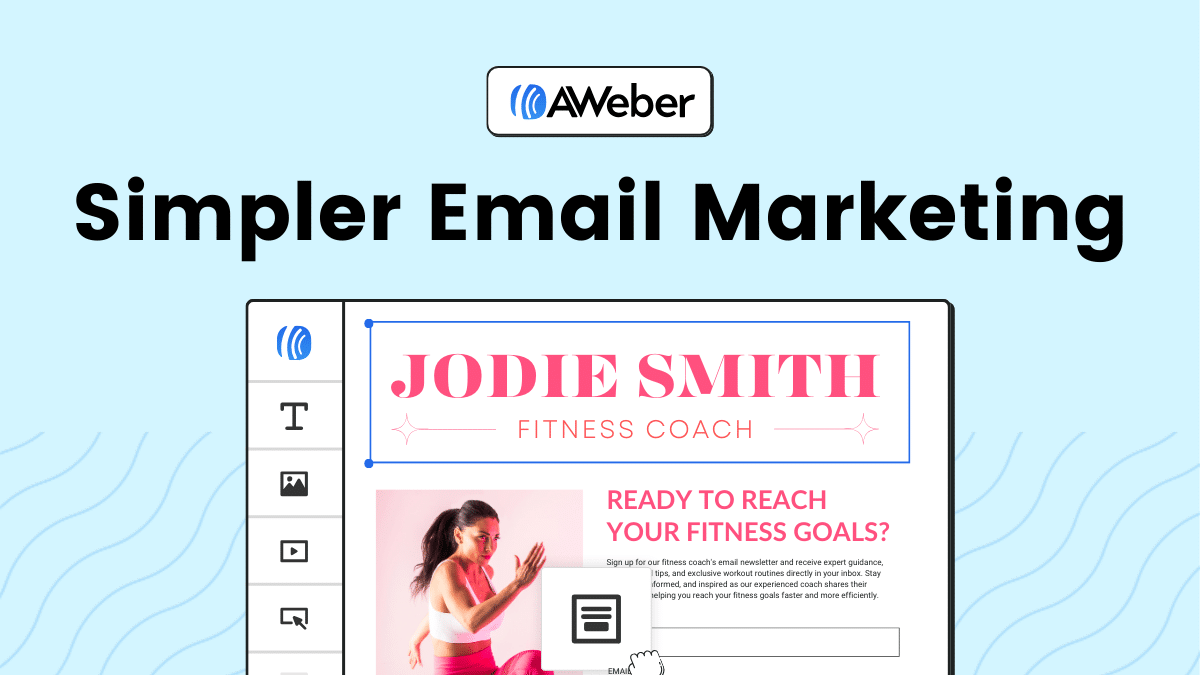 Aweber
| 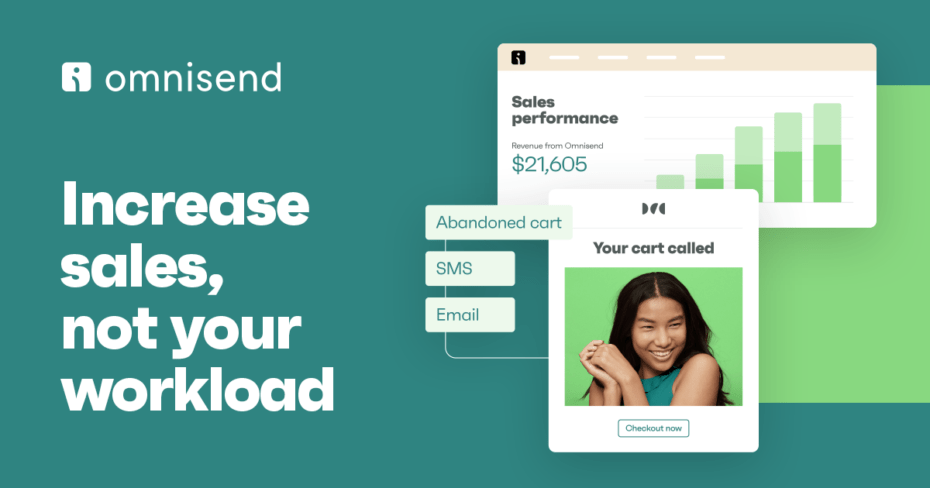 Omnisend
| 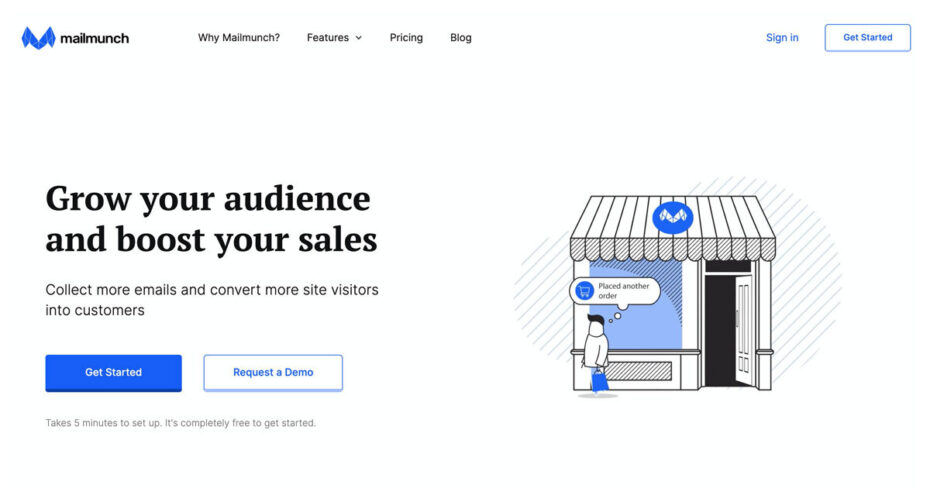 Mailmunch
|
Building an Email List
Building an email list is the first step to successful email marketing. I suggest you to create multiple touchpoints for collecting email addresses, such as sign-up forms on your website, pop-ups, and landing pages. Offering valuable lead magnets, like e-books, whitepapers, or exclusive discounts, can entice visitors to subscribe.
I advise you to promote your email list on your social media platforms and encourage your followers to join. Additionally, integrating your email sign-up form with your checkout process can help you capture emails from customers who make a purchase.
Segmenting your email list based on user behavior and preferences is crucial for delivering personalized content. I recommend you to use data from your website analytics and email marketing platform to create targeted segments. This can help you send more relevant emails that resonate with your subscribers.
I point out that maintaining a clean email list is essential for ensuring high deliverability rates. Regularly remove inactive subscribers and update your list to keep it accurate and engaged. I suggest sending re-engagement campaigns to inactive subscribers to encourage them to stay subscribed.
Crafting Compelling Email Campaigns
Crafting compelling email campaigns is key to engaging your subscribers and driving conversions. I believe that a well-designed email with valuable content can significantly impact your marketing efforts. Start with an attention-grabbing subject line that encourages recipients to open your email.
My recommendation is to keep your email content concise and to the point. Use clear and compelling language to convey your message and include a strong call-to-action (CTA) that guides your subscribers towards taking the desired action. I advise you to use images and visuals to make your emails more appealing and easier to read.
Personalization is crucial for increasing engagement. I suggest using the recipient’s name and tailoring the content based on their preferences and past behavior. This can help create a more personalized experience and build a stronger connection with your audience.
I recommend testing different elements of your email campaigns, such as subject lines, content, and CTAs, to see what works best for your audience. A/B testing can provide valuable insights that can help you optimize your campaigns for better results.
Analyzing Email Marketing Performance
Analyzing email marketing performance is essential for understanding the effectiveness of your campaigns and making data-driven decisions. I advise you to use the analytics tools provided by your email marketing platform to track key metrics such as open rates, click-through rates, and conversion rates.
I suggest setting up goals and benchmarks for your email campaigns to measure your success. Compare your performance against industry averages and your past campaigns to identify areas for improvement. This can help you understand what works and what doesn’t, allowing you to refine your strategy.
Pay attention to engagement metrics, such as open rates and click-through rates, to gauge how well your content resonates with your audience. I recommend you to analyze which types of content and subject lines generate the most engagement and use these insights to improve future campaigns.
My advice is to monitor your unsubscribe rates and feedback from your subscribers to understand why people may be leaving your list. This can help you address any issues and improve your email content and strategy. Continuously optimizing your email marketing efforts based on data insights will lead to better results and growth for your business.
5. Utilizing Paid Advertising Strategies
Utilizing paid advertising strategies is a powerful way to boost your internet marketing efforts. Paid advertising allows you to reach a larger audience quickly and effectively. Most importantly, it provides immediate visibility and can drive targeted traffic to your website.
I recommend starting with a clear understanding of your advertising goals. Whether you aim to increase brand awareness, generate leads, or drive sales, having specific objectives will guide your strategy and help you measure success. I advise you to allocate a budget that aligns with your goals and choose the right platforms to reach your target audience. Experimenting with different types of paid advertising can help you identify what works best for your business.
Introduction to Pay-Per-Click (PPC) Advertising
Pay-Per-Click (PPC) advertising is a popular paid advertising strategy where you pay a fee each time someone clicks on your ad. I believe PPC is highly effective because it targets users who are actively searching for products or services like yours. Google Ads is the most widely used PPC platform, offering a range of options to suit different budgets and objectives.
My recommendation is to start with keyword research to identify the terms your potential customers are searching for. Creating compelling ad copy that includes these keywords can help attract clicks and drive traffic to your website. I suggest setting a daily budget to control your spending and avoid overspending.
I advise you to monitor your PPC campaigns closely. Analyzing performance metrics such as click-through rates (CTR) and conversion rates can help you identify which ads are working and which need adjustment. I point out that regular optimization is crucial for maintaining and improving the effectiveness of your PPC campaigns.
I recommend you to use A/B testing to experiment with different ad variations. Testing different headlines, descriptions, and calls-to-action can provide valuable insights into what resonates best with your audience. Continuously refining your PPC strategy based on these insights will help you achieve better results.
Social Media Advertising Tactics
Social media advertising is another effective paid advertising strategy. Platforms like Facebook, Instagram, and LinkedIn offer advanced targeting options that allow you to reach specific demographics based on interests, behaviors, and location. I think social media ads are particularly useful for building brand awareness and engaging with your audience.
I suggest creating visually appealing ads that capture attention and encourage interaction. High-quality images, videos, and graphics can make your ads stand out in users’ feeds. I recommend using clear and compelling calls-to-action to guide users towards taking the desired action, whether it’s visiting your website or making a purchase.
My advice is to take advantage of the targeting options available on social media platforms. You can create custom audiences based on your existing customer data or use lookalike audiences to reach new potential customers who share similar characteristics. This can help you maximize the relevance and effectiveness of your ads.
I recommend tracking the performance of your social media ads using the analytics tools provided by each platform. Metrics such as engagement rates, click-through rates, and conversion rates can provide valuable insights into how your ads are performing. Regularly reviewing and optimizing your campaigns based on these insights will help you achieve better results.
Measuring ROI of Paid Advertising
Measuring the return on investment (ROI) of your paid advertising efforts is crucial for understanding their effectiveness and making data-driven decisions. I believe that a clear understanding of your ROI can help you allocate your advertising budget more efficiently and maximize your results.
My recommendation is to track the costs associated with your paid advertising campaigns, including ad spend, creative production, and any other related expenses. Compare these costs to the revenue generated from your campaigns to calculate your ROI. This will help you determine which campaigns are delivering the best value for your investment.
I suggest using analytics tools to track the performance of your ads. Google Analytics, for example, can provide detailed insights into how users interact with your website after clicking on your ads. By setting up conversion tracking, you can measure specific actions such as purchases, sign-ups, or downloads, and attribute them to your paid advertising efforts.
I advise you to regularly review your ROI metrics and compare them against your goals. This can help you identify areas for improvement and optimize your campaigns for better performance. For example, if you find that certain keywords or ad placements are delivering a higher ROI, you can allocate more budget to those areas.
I point out that measuring ROI is an ongoing process. Continuously monitoring and analyzing your campaigns will help you stay informed about their performance and make necessary adjustments. This iterative approach will ensure that your paid advertising efforts remain effective and aligned with your business goals.
Analyzing and Improving Your Internet Marketing Efforts
Analyzing and improving your internet marketing efforts is essential for achieving long-term success. By regularly reviewing your performance and making data-driven decisions, you can optimize your strategies and drive better results. Most importantly, continuous improvement helps you stay competitive and adapt to changing market conditions.
I recommend setting up a robust analytics framework to track key metrics and gain insights into your marketing performance. This will help you understand what’s working and what needs adjustment. My advice is to focus on metrics that align with your business goals, such as website traffic, conversion rates, and customer engagement.
Setting Up Analytics Tools
Setting up analytics tools is the first step in effectively analyzing your internet marketing efforts. Hotjar is one of the most widely used tools and offers comprehensive insights into your website’s performance. I believe that integrating Hotjar with your website is crucial for tracking user behavior and measuring the success of your marketing campaigns.
My recommendation is to set up Hotjar and configure it to track key events on your website, such as page views, clicks, and conversions. This will provide you with detailed data on how users interact with your site and which marketing channels are driving the most traffic and conversions. I suggest you also explore other analytics tools like Woopra, which can provide valuable insights into your website’s search performance.
I advise you to regularly review your analytics data and set up custom reports to monitor your key metrics. This will help you stay informed about your performance and identify trends and patterns. Additionally, setting up alerts for significant changes in your data can help you quickly address any issues or opportunities.
I recommend using heatmaps and session recording tools to gain a deeper understanding of how users interact with your website. These tools can provide visual insights into user behavior, such as where they click, scroll, and spend the most time. This information can help you optimize your website’s design and user experience.
Understanding Key Metrics
Understanding key metrics is essential for making informed decisions and optimizing your internet marketing efforts. Some of the most important metrics to track include website traffic, conversion rates, bounce rates, and average session duration. I think focusing on these metrics will provide a comprehensive view of your website’s performance and user engagement.
Website traffic is a fundamental metric that indicates the number of visitors to your site. I suggest analyzing traffic sources to understand where your visitors are coming from, such as organic search, social media, or paid advertising. This can help you identify which channels are driving the most traffic and allocate your marketing budget accordingly.
Conversion rates measure the percentage of visitors who complete a desired action on your website, such as making a purchase or filling out a form. I recommend tracking conversion rates for different marketing campaigns and landing pages to determine what’s working and what needs improvement. Optimizing your conversion rates can lead to higher revenue and better ROI.
Bounce rates indicate the percentage of visitors who leave your site after viewing only one page. A high bounce rate can suggest that visitors aren’t finding what they’re looking for or that your site’s content isn’t engaging. I advise you to analyze your bounce rates and make necessary adjustments to improve user experience and retain visitors.
Average session duration measures the amount of time visitors spend on your site. I believe that longer session durations generally indicate higher engagement and interest in your content. I suggest creating valuable and relevant content that encourages visitors to explore your site further and spend more time interacting with your pages.
Continuous Improvement Strategies
Continuous improvement strategies are crucial for staying competitive and achieving long-term success in internet marketing. By regularly reviewing your performance and making data-driven adjustments, you can optimize your marketing efforts and drive better results. I strongly believe that a proactive approach to improvement will help you stay ahead of the curve.
I recommend conducting regular audits of your marketing campaigns and website to identify areas for improvement. This can include analyzing your SEO performance, content quality, and user experience. My suggestion is to use the insights gained from these audits to refine your strategies and address any issues.
I advise you to stay updated with the latest trends and best practices in internet marketing. This can involve attending industry conferences, participating in webinars, and reading relevant blogs and publications. Staying informed will help you adapt to changes in the market and implement new strategies that can enhance your performance.
I recommend fostering a culture of experimentation within your marketing team. Encourage your team to test new ideas and strategies through A/B testing and pilot projects. This can help you discover innovative approaches and identify what works best for your audience. Regularly reviewing the results of these experiments and incorporating successful tactics into your overall strategy will drive continuous improvement.
I point out that gathering feedback from your audience is invaluable for improving your marketing efforts. Use surveys, feedback forms, and social media interactions to understand your audience’s needs and preferences. This information can guide your content creation, product development, and customer service strategies, leading to a more effective and customer-centric approach.


